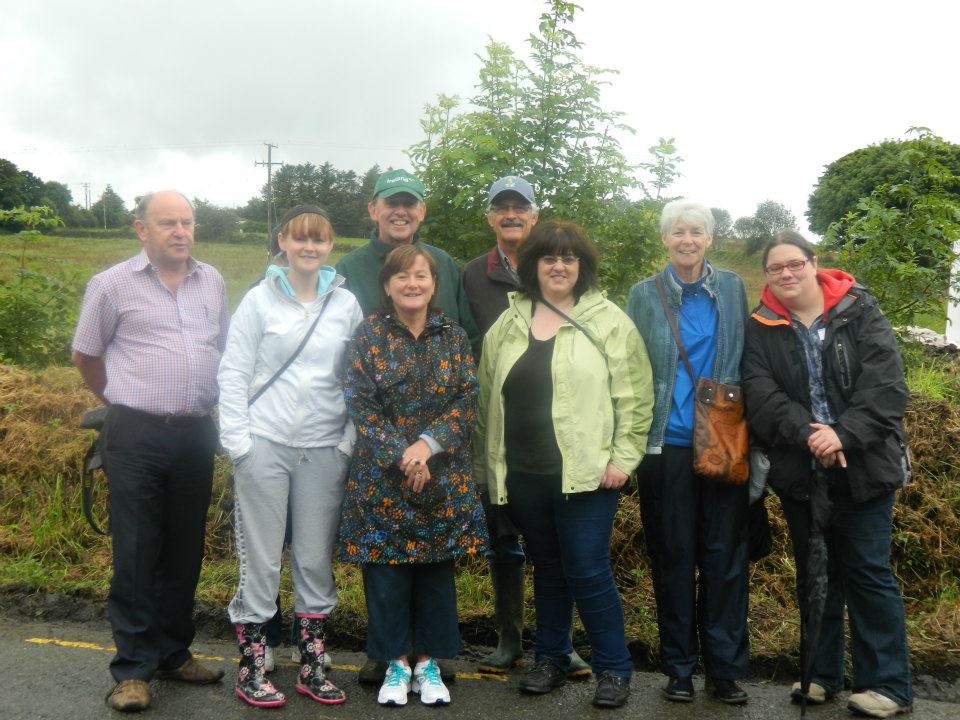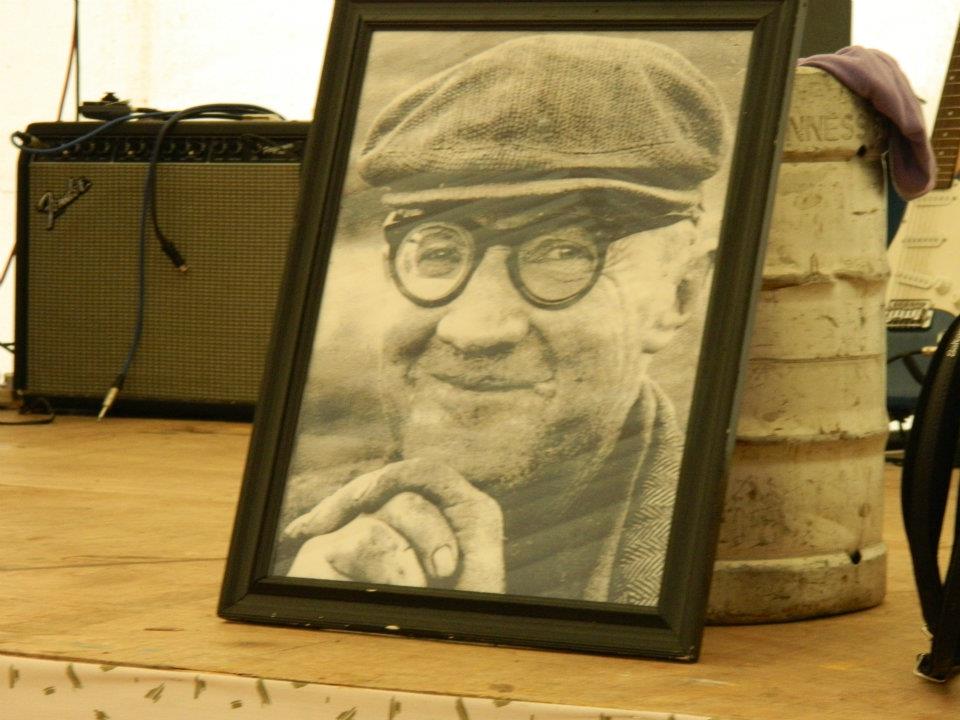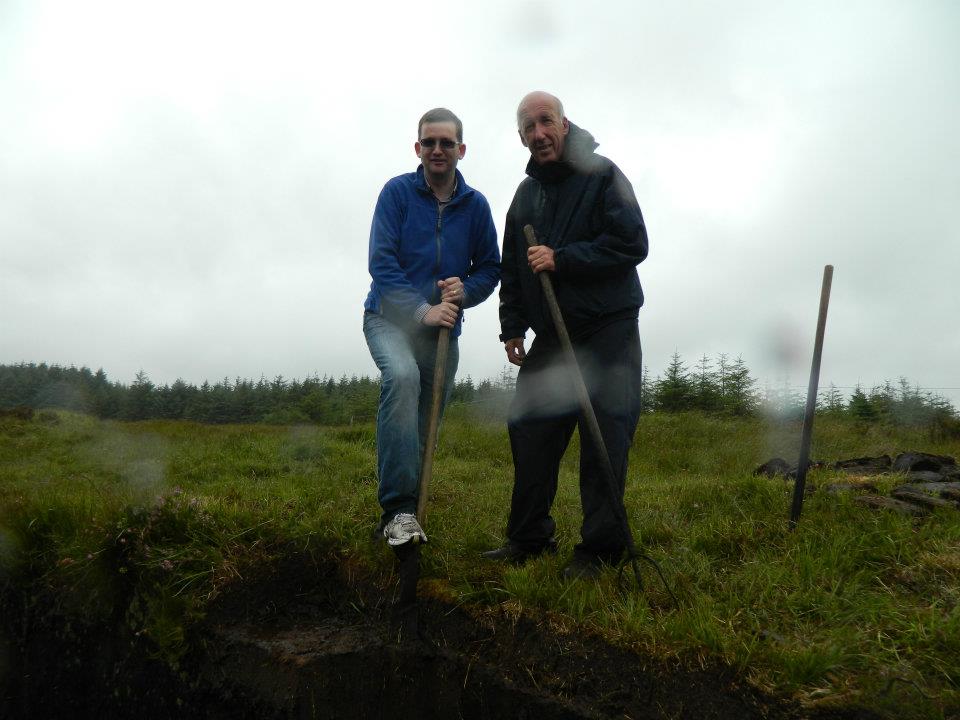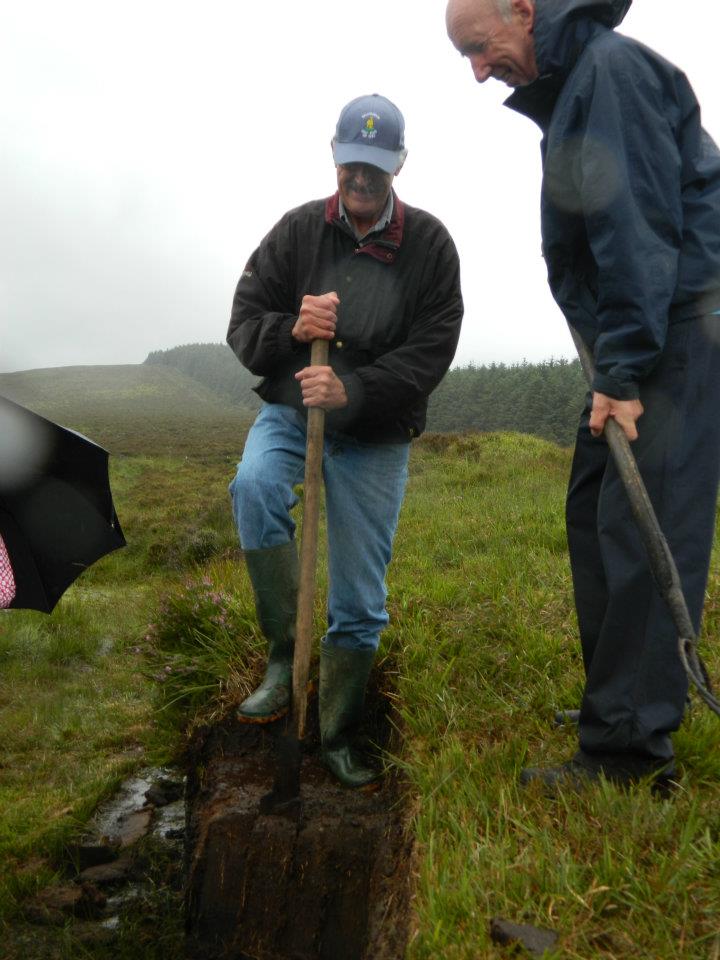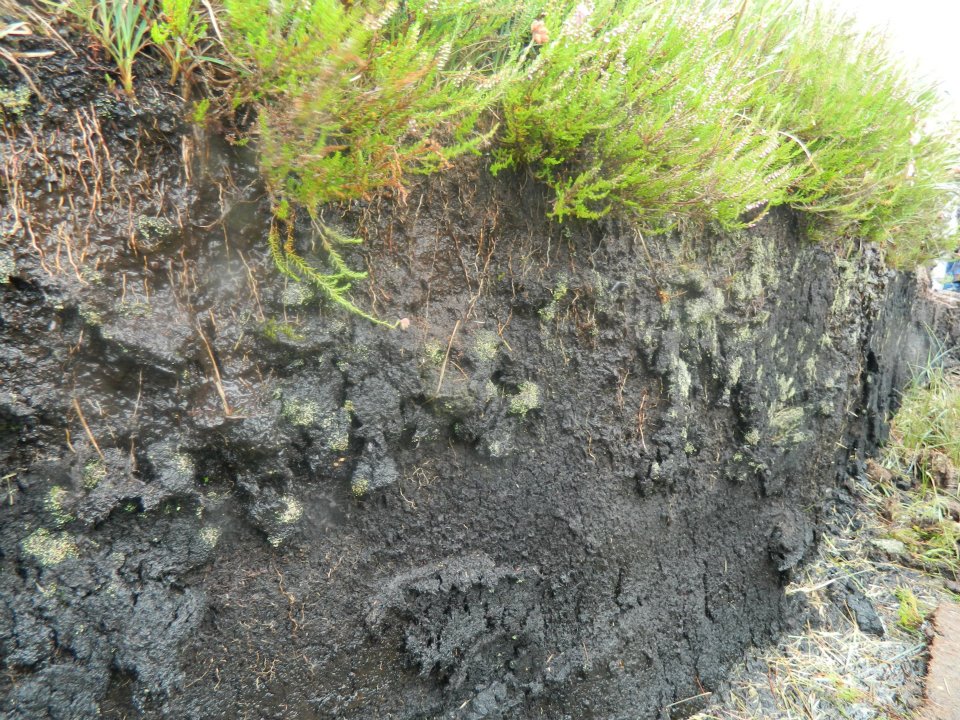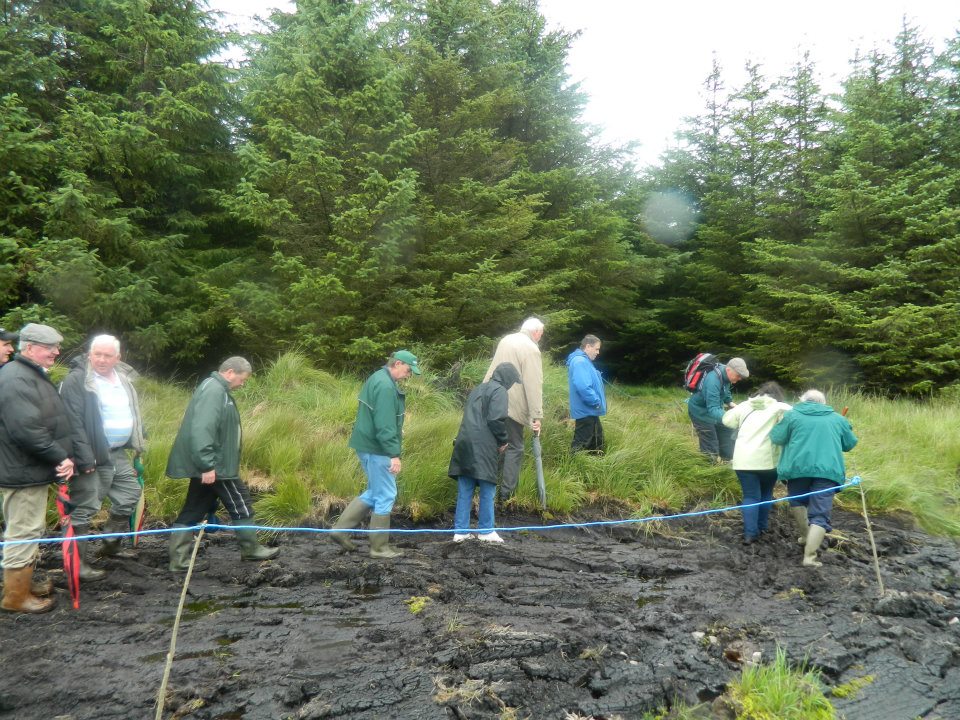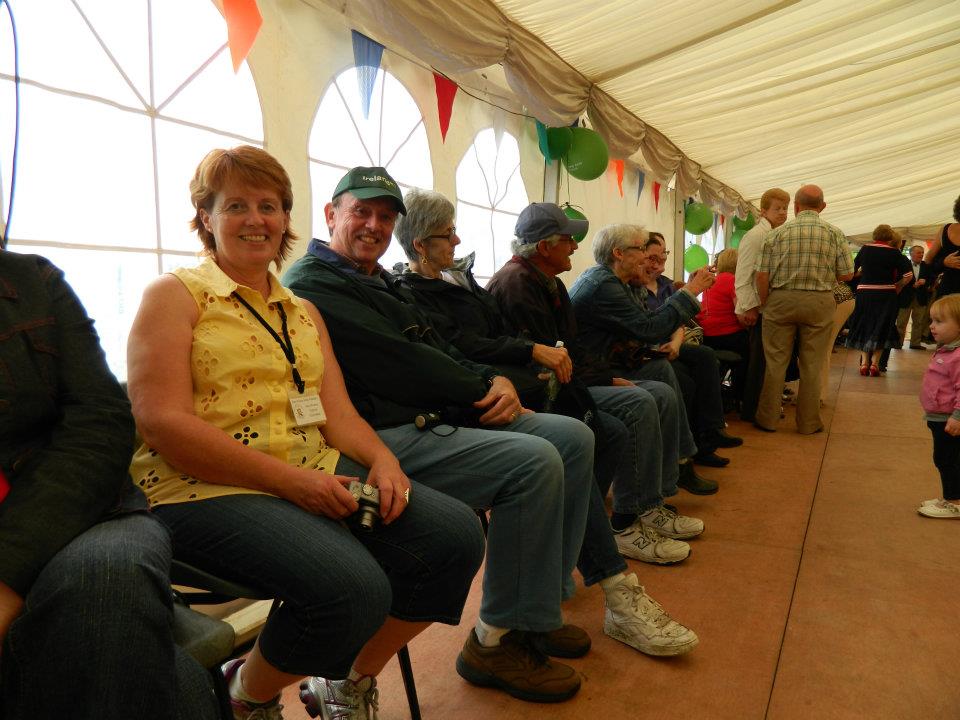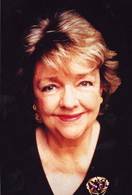
Lavender in a flower bed outside the library
<<<<<<<<<<<
Official Opening

The service users were the VIPs who officially opened the new Dóchas, St. John of God day centre at Upper William Street on Thursday last, June 27 2024.
“The new Dóchas Day Service is expected to play a crucial role in the lives of many, offering various programs and activities tailored to meet the needs of individuals with disabilities. The service’s goal is to empower these individuals, fostering a sense of belonging and enhancing their quality of life through personalized support and community involvement.”
(St. John Of Gods Kerry Services website)
<<<<<<<<
Mourning Mícheál ÓMuircheartaigh
(Text and photos from Dan Paddy Andy Festival on Facebook)
Apologies that the photos are not in correct order here.
The sad news reached us on Tuesday of the passing of the legend Mícheál Ó Muircheartaigh. Mícheál became well known to us in Lyreacrompane, not just because of his riveting and unique style of commentating on football and hurling matches on radio and TV but because he graciously agreed to unveil the Dan Paddy Andy Memorial in 1998 and ten years later returned at our invitation to officially launch the Dan Paddy Andy Festival. We have great memories of those times as were recalled by Joe Harrington in an interview with Jerry O’Sullivan on Radio Kerry on Wednesday morning. To hear the interview, (which was by phone) click on the following link. The interview is right at the start and follows a recording of Micheál reciting a locally composed verse at the unveiling in 1998. The total length of the recording and interview is just over 7 minutes long.
We have also added some photos from the events all those years ago… Photo 1 includes Fr O’Connell PP, Dan Paddy’s daughter Mary and her son at the unveiling along with her brother Jimmy from New York and John B Keane with Mícheál Ó Muircheartaigh addressing the crowd. Photo 2 shows two men who knew most about matches! Photo 4 is at the marker outside the house in which Dan was born, lived and died and which is owned by Michael and Sue Lynch who are in the photograph along with Committee members back then. Photo 5 is of Jimmy O’Sullivan and Mícheál Ó Muircheartaigh at the Memorial. In photo 6 Michael Mangan is making a presentation to Micheál who had returned ten years after he unveiled the Monument to officially opened the 2007 Dan Paddy Andy Festival.




<<<<<<<<<<
Árd Chúran Choir
Brenda O’Halloran invited me to hear this lovely choir on their first public performance on June 27 2024. They sang in the lovely Ard Chúram Centre. The audience was made up of visitors from the nearby Aras Mhuire Nursing Home.
It was a special day. I was delighted to be there.

Shelby conducting the choir

Brenda and Shelby

Teresa and Mary
<<<<<<<<
Irish Christian Names
Sean Carlson’s essay continued
All my life, people have mispronounced and misspelled my mother’s name, Nuala, with no evidence of mal-intent. Mostly, I’ve seen it written as it sounds, “Noola” or “Newla,” and heard it spoken as it looks, “New-ah-la.” She has been referred to as “Nyala,” like the antelope and “Nala” like the “Lion King” heroine. Her most recent Starbucks order was made for “Lula,” and a piece of mail once addressed her as “Koala.” Although Irish names may at first appear daunting, their linguistic logic is easy to understand — with a few pointers.
The dictionary’s blunder — amusing to some, aggravating to others — did have some underlying value: All it takes is a closer look at the perceived disconnects between spelling and pronunciation in modern American English to appreciate the rich tapestry of influences behind the many words in our language that come from others.
The word “alcohol” stems from the Arabic al-kuḥl. “Ketchup” likely comes from the Hokkien Chinese word kê-chiap or the Malay kecap, in reference to sweet sauces. A friend in Ireland reminded me that cappuccino comes from the Italians, which means that whenever we order two, we should, grammatically speaking, be asking for cappuccini.
During summer barbecues, we have German to thank for frankfurters, hamburgers, and sauerkraut. The French gave us camaraderie. Our khaki pants are the result of British colonialism, the word for such a dusty color originating from Hindi, by way of Urdu, by way of Persian. As for the value of having good judgment, the word “acumen,” like so many English words, traces back to Latin. And of course, the Irish have given us a lot as well, their go leor becoming “galore” in English.
In the aftermath of the Great Famine, or An Gorta Mór, the 19th-century Encyclopedia Britannica — Merriam-Webster’s parent company as of 1964 — published its eighth edition with an extensive entry on Ireland. It explained to readers that Ireland was considered an important colony of the British crown and that the “natives” clung to the Celtic roots of Eri or Erin, Ireland’s name in Irish, “with the attachment of veneration.”
Of course, that veneration was an attempt to preserve a language — and with it, the culture it helped sustain. Even today, though Irish is an official language of both the Republic of Ireland and Northern Ireland, UNESCO classifies it as endangered alongside its Gaelic brethren, Scottish and Manx, the language of the Isle of Man.
The next time Merriam-Webster pokes fun at an Irish name, it might want to first refer to another helpful dictionary: Teanglann, a public project to create a free online library for Irish-language grammar and pronunciation, including audio recordings in each dialect. Not only is the tool indispensable for helping with Irish-language learning, but it also makes it simple to discover words like botún, the Irish for faux pas: “a gross mistake.”
Seán Carlson is working on his first book, a family memoir about Irish migration.
<<<<<<<<
A Fact
Newborn babies can only see in black and white for a few months.
I got this “fact” from a calendar. It sounds implausible to me but maybe someone will fact check it for us.
<<<<<<<<<

